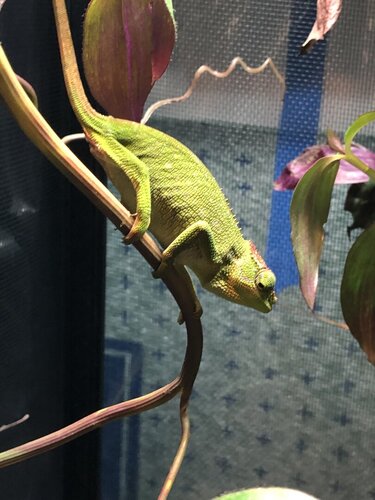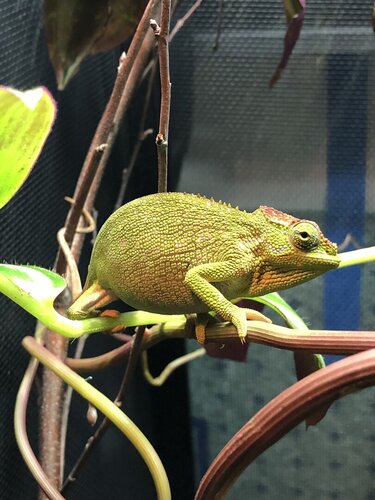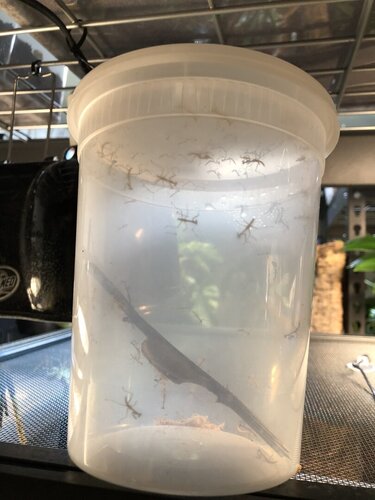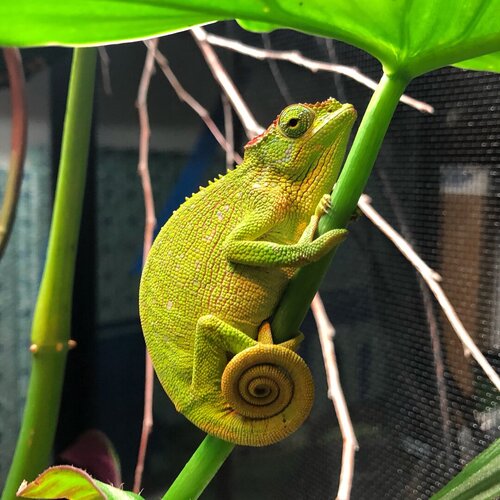snitz427
Chameleon Enthusiast
They seem to be settling in well and are very active and not at all bashful. They’re eating fruit flies, bsf, and small sticks - with small crickets on the way (yuck).
They’re in my basement with temps around 68-70, getting up to 75-80 right up by the lights. Overnight drops to closer to 60. I’m fogging for 2 hours every 4 hours, with a heavy hand spraying each morning. I spray for about a minute, but through the screen so it creates rain drops that continue to fall for quite a while.
I think Im picking up another pair from the seller at the end of the month. Im hoping its a long time before my husband notices... because I dont plan to tell him! Blame @kinyonga


They’re in my basement with temps around 68-70, getting up to 75-80 right up by the lights. Overnight drops to closer to 60. I’m fogging for 2 hours every 4 hours, with a heavy hand spraying each morning. I spray for about a minute, but through the screen so it creates rain drops that continue to fall for quite a while.
I think Im picking up another pair from the seller at the end of the month. Im hoping its a long time before my husband notices... because I dont plan to tell him! Blame @kinyonga








